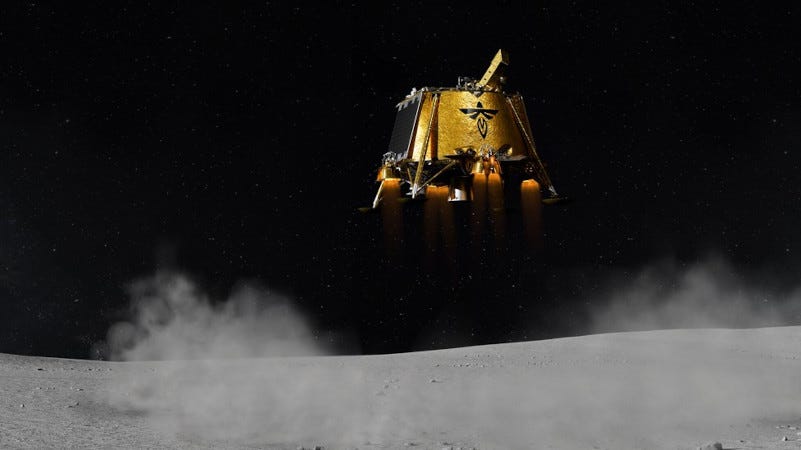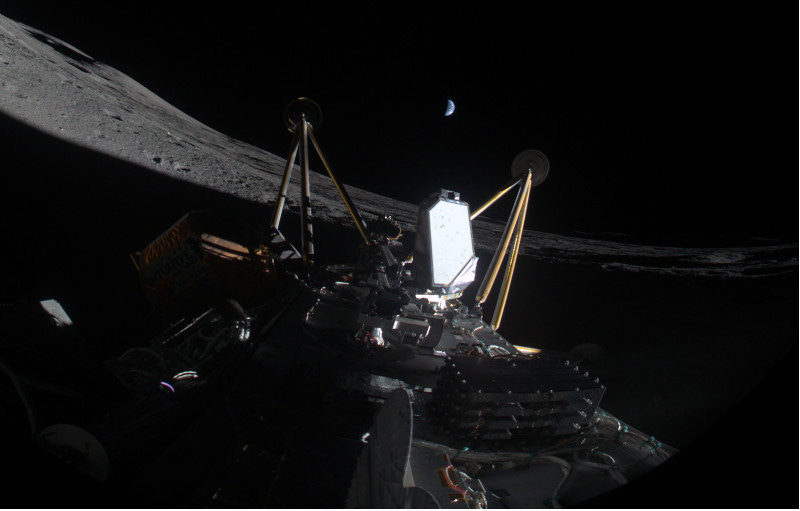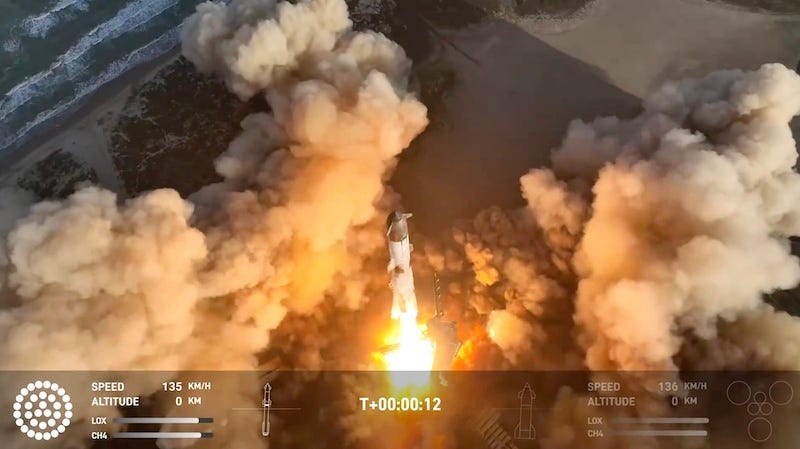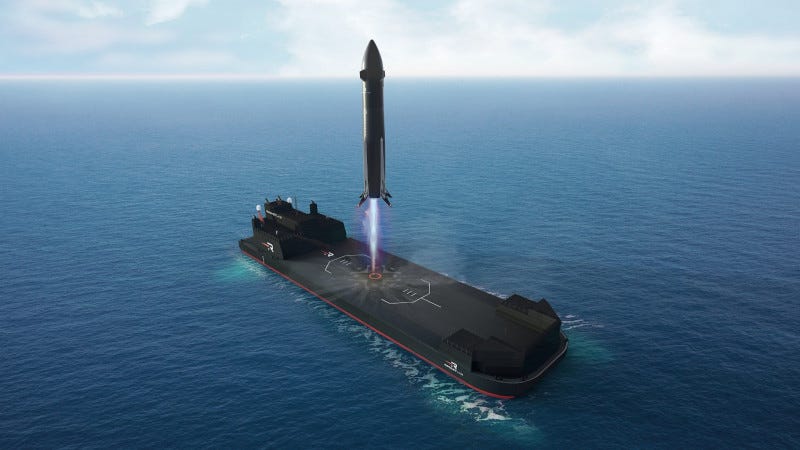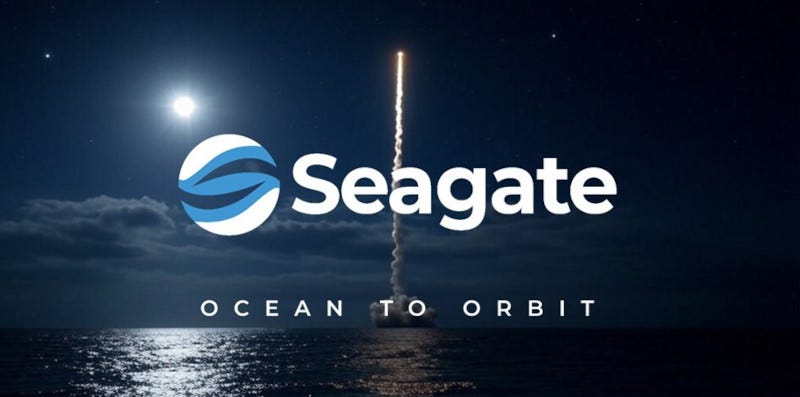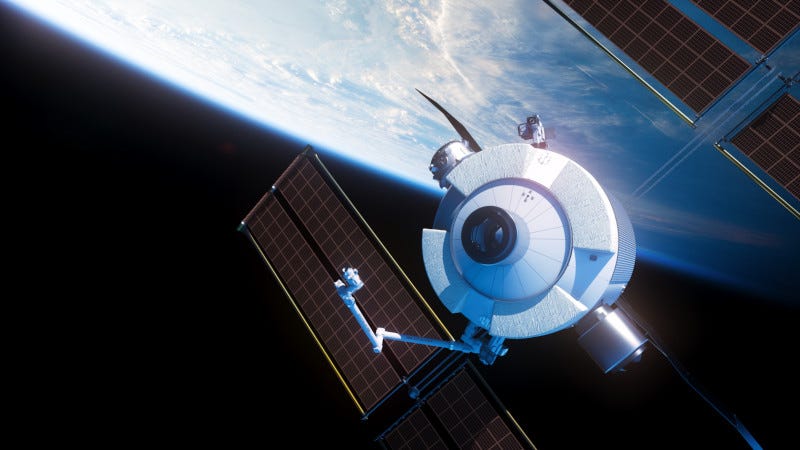Space exploration is all about successes and setbacks, and there was some of both this week. I'm Tom Patton, and here are some of the top stories from The Journal of Space Commerce this week.
We'll start with a success. On Sunday, Blue Ghost Mission 1 ... dubbed by Firefly Aerospace as "Ghost Riders in the Sky"… successfully landed on the Moon. The achievement marked the first time that a commercial company achieved a fully successful soft landing on the lunar surface.
The lander touched down at 2:34 a.m. CST on Sunday within its 100-meter landing target next to a volcanic feature called Mons Latreille. Blue Ghost’s shock absorbing legs stabilized the lander as it touched down, and inertial readings confirmed the lander was upright in a stable configuration.
The surface operations now underway include lunar subsurface drilling, sample collection, X-ray imaging, and dust mitigation experiments. On March 14, Firefly expects to capture high-definition imagery of a total eclipse when the Earth blocks the sun above the Moon’s horizon. On March 16, Blue Ghost will then capture the lunar sunset, providing data on how lunar dust levitates due to solar influences and creates a lunar horizon glow first documented by Eugene Cernan on Apollo 17. Following the sunset, Blue Ghost will operate several hours into the lunar night and continue to capture imagery that observes how levitating dust behavior changes after the sunset.
-0-
The news was not so good for Intuitive Machines. The IM-2 mission Athena Lander overshot its planned landing zone by about 250 meters and landed inside a crater near the lunar south pole.
Intuitive Machines knew something had gone wrong shortly after the landing. but during a news conference with NASA Thursday afternoon, Intuitive Machines CEO Steve Altemus remained optimistic about what they might be able to achieve.
"We don't believe we're in the correct attitude on the Moon yet again," Altemus said. "I can say that we are charging on the surface, We are commanding uplink and downlink from the vehicle to our ground network ... so we are communicating. We can command payloads on and off, we can send commands to the vehicle, and we have powered down and done some power conservation steps as prudent measures to see how long and what objectives we can accomplish in the mission going forward. When we get that full assessment, we will then work closely with NASA science and technology groups to identify science objectives that are of the highest priority. And then we'll figure out what the mission profile will look (like). It will be off-nominal, because we are not getting everything we asked for in terms of power generation, communication, etc."
On its website Friday, the company said that after landing, mission controllers were able to accelerate several program and payload milestones, including NASA’s PRIME-1 suite, before the lander’s batteries depleted.
But with the direction of the sun, the orientation of the solar panels, and extreme cold temperatures in the crater, Intuitive Machines does not expect Athena to recharge, and so declared the mission to be concluded.
-0-
SpaceX conducted its eighth flight test of its full stack Starship spacecraft on Thursday. The test was reminiscent of a long foul ball to left field. The Starship Super Heavy booster performed nominally. The second stage, or "ship" separated successfully from the booster, and the booster was recovered intact back at Starbase in south Texas. And then ...
"And we just saw some engines go out ... it looks like we are losing attitude control of the Ship ..."
For the second straight time, the second stage experienced an energetic event in the aft portion of Starship, resulting in the loss of several Raptor engines. This in turn led to a loss of attitude control and ultimately a loss of communications with Starship. Final contact came approximately 9 minutes and 30 seconds after liftoff.
Some airspace was briefly closed and the FAA issued a ground stop for some airports in south Florida due to the potential for debris falling back to Earth. The FAA issued a statement indicating that the agency is requiring SpaceX to perform a mishap investigation into the loss of the Starship vehicle during launch operations.
During the event, the FAA activated a Debris Response Area and briefly slowed aircraft outside the area where space vehicle debris was falling or stopped aircraft at their departure locations. Normal operations have resumed.
-0-
In other news, a new satellite that can be produced in high volumes and tailored for large constellations, targeting high value applications and national security missions, has been introduced by Rocket Lab. 'Flatellite' is a scalable, long-life, high-power, stackable satellite that enables secure, low-latency, high-speed connectivity and remote sensing capability for national security, defense, and commercial markets.
Flatellite employs a low-profile, stackable structure to maximize the number of satellites that can be deployed per launch and has seamless integration with Rocket Lab’s own Neutron rocket. The design integrates heritage components and subsystems, including propulsion, flight software, avionics, reaction wheels, star trackers, separation system, solar arrays, radios, composite structures, and fuel tanks.
Flatellite joins Rocket Lab’s family of four standard spacecraft models that enable commercial, science, exploration, and defense missions, all manufactured at the Company’s Spacecraft Production Complex and headquarters in Long Beach, California.
-0-
Speaking of the Neutron rocket, Rocket Lab also introduced its ‘Return On Investment' ocean landing platform. The vessel is a 400 ft modified barge that will be customized to enable landings at sea for its reusable Neutron rocket.
Sound familiar?
The modifications will include autonomous ground support equipment to capture and secure the landed Neutron, blast shields to protect equipment during Neutron landings, and station-keeping thrusters for precise positioning. The Company has acquired the barge and Construction of ‘Return On Investment’ will take place throughout this year, with expectations of being ready to enter service in 2026.
-0-
But booster recovery isn't the only space operation that may one day be conducted from a floating platform. A new company called Seagate Space Corporation, based in Jacksonville, FL, says it will bring maritime innovations that are both cost-effective and rapidly deployable to the industry.
By moving launches offshore, the company says it can unlock the vastness of the ocean as a solution to the barriers to launch from land-based locations – an undertaking they believe is vital for delivering on the promise of the orbital age.
Seagate Space is currently in discussions with potential launch partners for a demonstration mission targeting early 2026.
-0-
Full development of the Starlab space station can begin following the successful completion of the Preliminary Design Review (PDR) in collaboration with NASA, an important step toward full-scale production.
The completion of the PDR and an exacting level 1 safety review signify that the station's architecture, systems and integration plans are ready to advance the project toward certification with the intent to win a future contract for NASA utilization and astronaut activity. This achievement positions the project for the next phase: detailed design and hardware development, leading to a Critical Design Review to confirm the station's readiness.
-0-
And those are just some of the stories presented by The Journal of Space Commerce this week. If you're a space enthusiast looking for stories about innovation in the space industry, we hope you'll consider becoming a paid or founding subscriber to The Journal of Space Commerce. You can be the first to get access to in-depth articles about the promise of space, as well as our Ex Terra Extra podcast, where we take a deep dive into some of the most fascinating aspects of the new space industry.
So please consider a paid subscription to The Journal of Space Commerce to help us maintain our independence as we chronicle, cajole, and when necessary critique the new space industry ... Thanks for listening. I'm Tom Patton.
You Might Have Missed:





